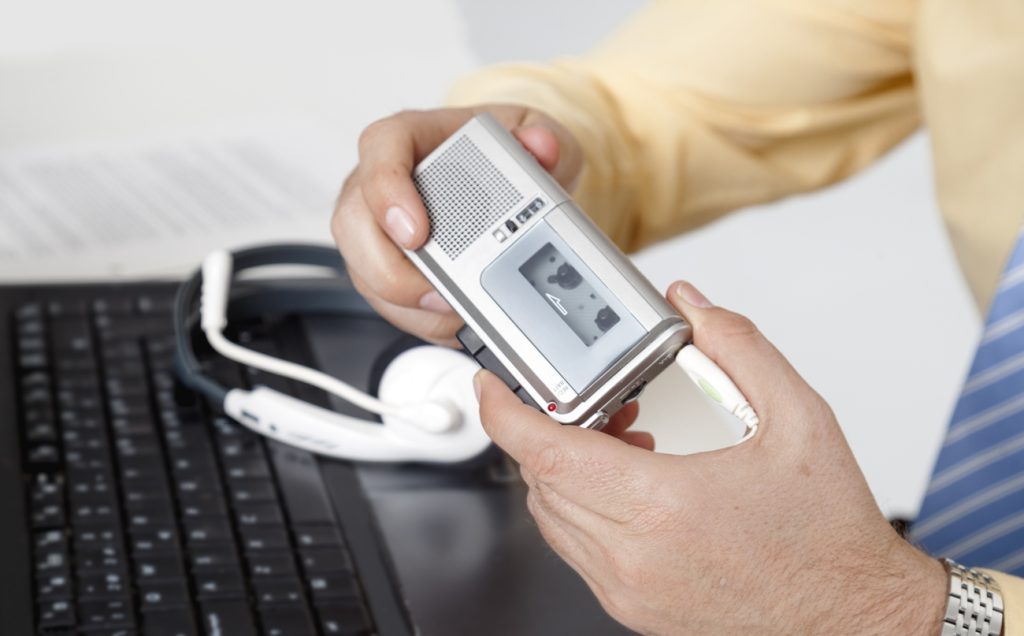Verbatim transcription is a unique type of transcription where every utterance – every “um,” “ah,” false start, stutter, repetition, grammatical error, and partial word – is reproduced in written format.
This means a verbatim transcript reads just how the recording sounds. A transcriptionist seeks to turn the spoken word into text, most accurately reflecting what was said.
Recorded statement transcripts are almost always verbatim style. Steven Kerry Brown defines a recorded statement as a, “voice tape recording made by a witness covering facts and/or the witness’s recollection of the pertinent incident.”
Adjusters and insurance special investigators typically take statements and it does not matter if they are taken in person or over the phone.
Uses for Verbatim Transcription
A recorded statement is a key piece of evidence in the investigation of a claim. Subrogation and special investigation (SIU) professionals typically put in the requests to have a statement transcribed.
A subrogation professional might prepare a claim file to be submitted to arbitration, and having a transcript included as a piece of evidence often adds significant value and credibility to the file. As Hector Quiroga, a law professional, points out, he has seen many cases in which arbitrators will rule in favor of a better documented file.
The most common use for recorded statement transcripts is in claim files used for inter-company arbitration.
Arbitration Forums is the most popular group of insurance arbitration professionals, and provides a neutral panel of claims professionals to hear cases. The organization offers arbitration through a number of different forums, including auto, PIP, and property forums, to name a few.
Insurers might also use verbatim transcripts as an exhibit in court.
Every Word Matters
This style is important for interviews where the way in which something is said is just as important as the content of what is being said.
Claims professionals can often pick up on valuable information based on certain sighs, stutters, pauses and other utterances the interviewee produces and it takes a skilled transcriptionist to accurately reproduce all the utterances of an interviewee.
Having every utterance reproduced in typed format can help a fraud investigator more easily identify areas of the case to devote greater attention to. For example, if the interviewee stutters more and uses more filler words (perhaps indicating nervousness) when explaining who was driving their car at the time of the accident, perhaps the interviewee is attempting to distort the truth.
Transcribing verbatim style can be quite a challenge and still requires human expertise. The adjuster and interviewee might speak over one another, accents can be difficult to understand, and poor recording quality can complicate the transcription process.


I am concerned how a transcriber at first becomes familiar with the terms used in this specific field. Is there a course to be taken, a book to be read or is it just repetition? Also,are there a minimum of hours a transcriber must complete/week to be employed at Allegis?
Hi Barbara, It’s a combination of training and repetition. We provide our transcriptionists with resources for insurance terminology. Dealing 100% with insurance recorded statements also serves to quickly familiarize a person with relevant terms.
I am interested in becoming a transcriptionist for your company. How might I go about this?
Melanie, You can apply here: https://www.allegistranscription.com/transcription-services/transcription-jobs/